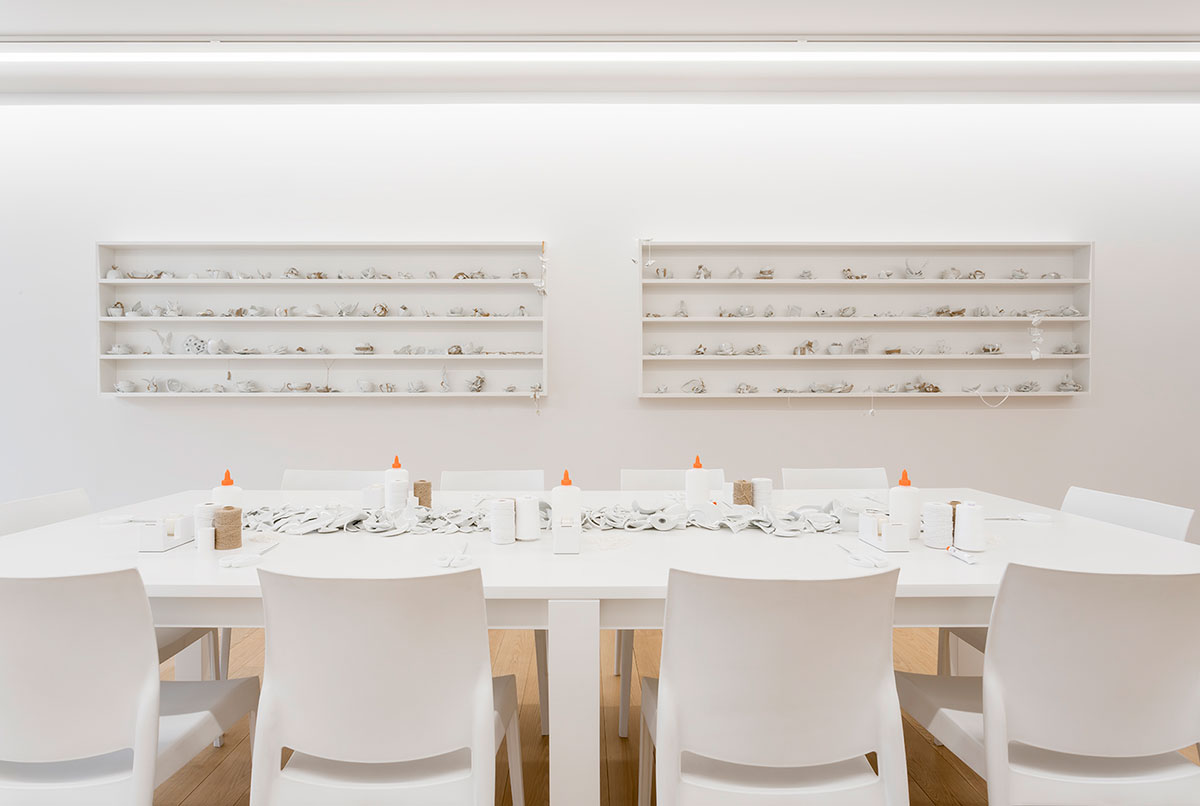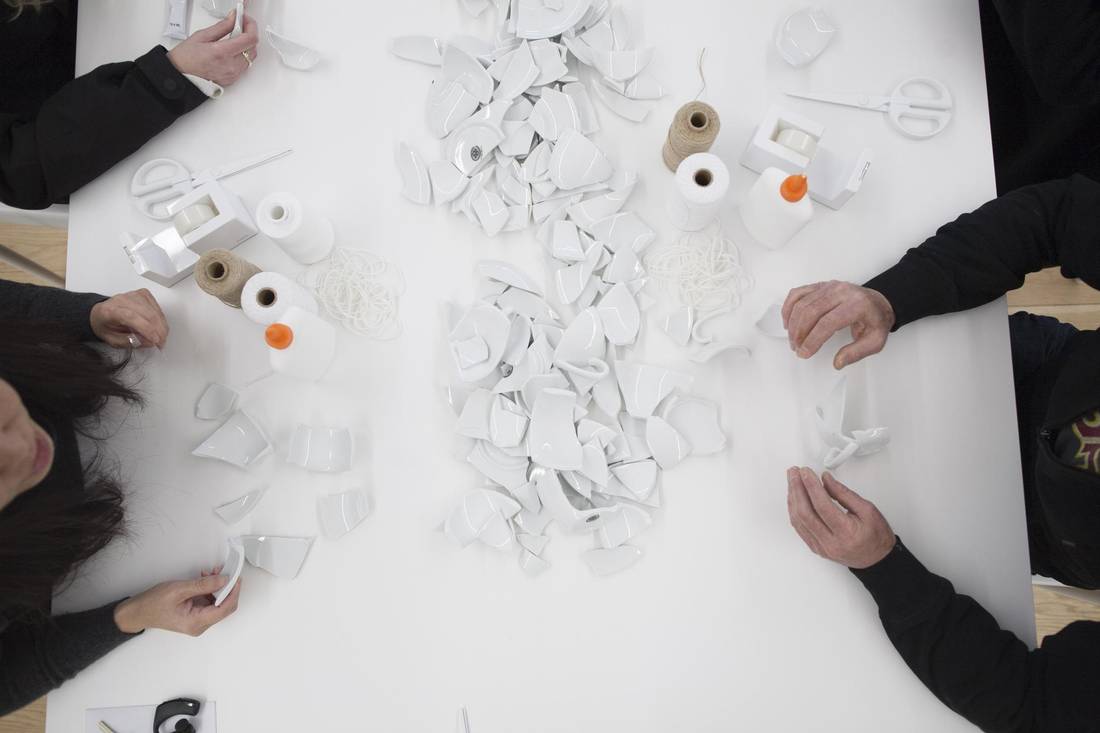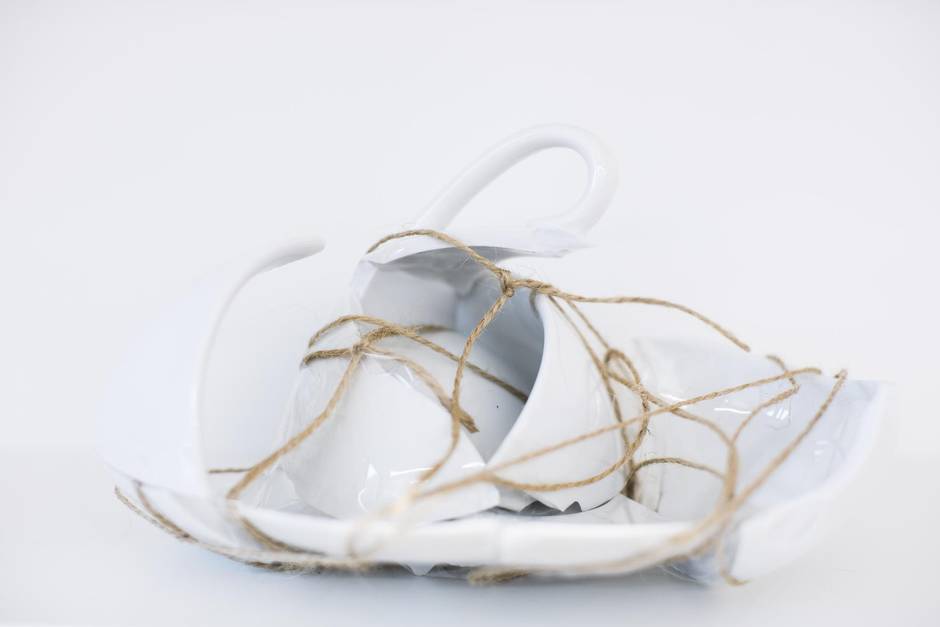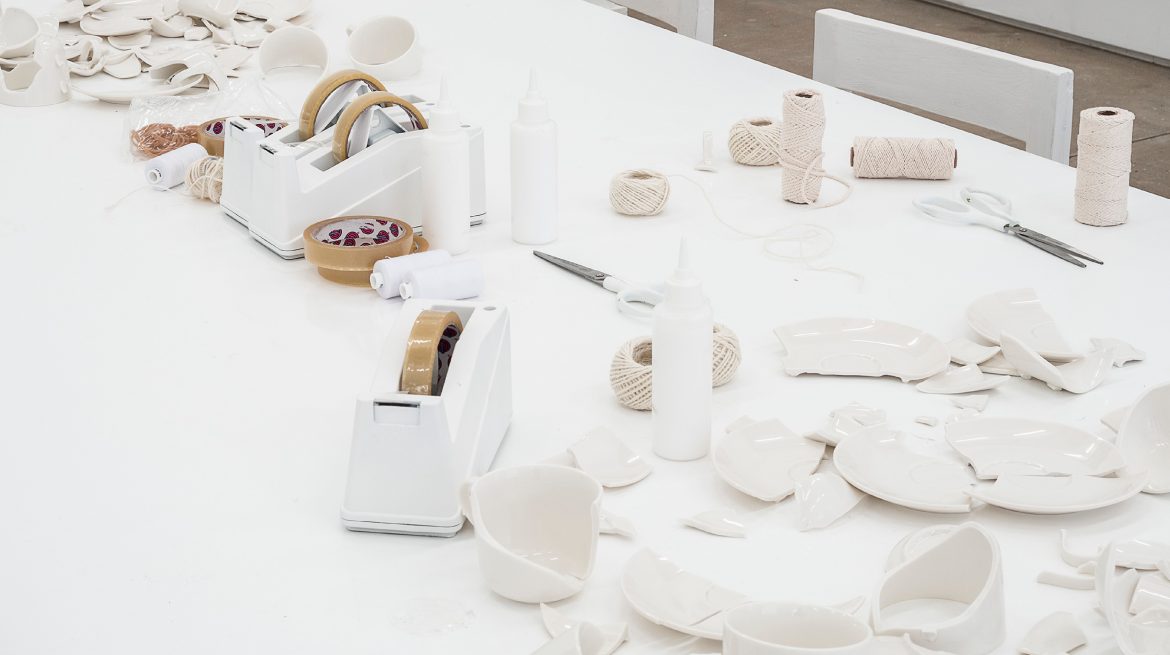ART CITIES:London-Yoko Ono
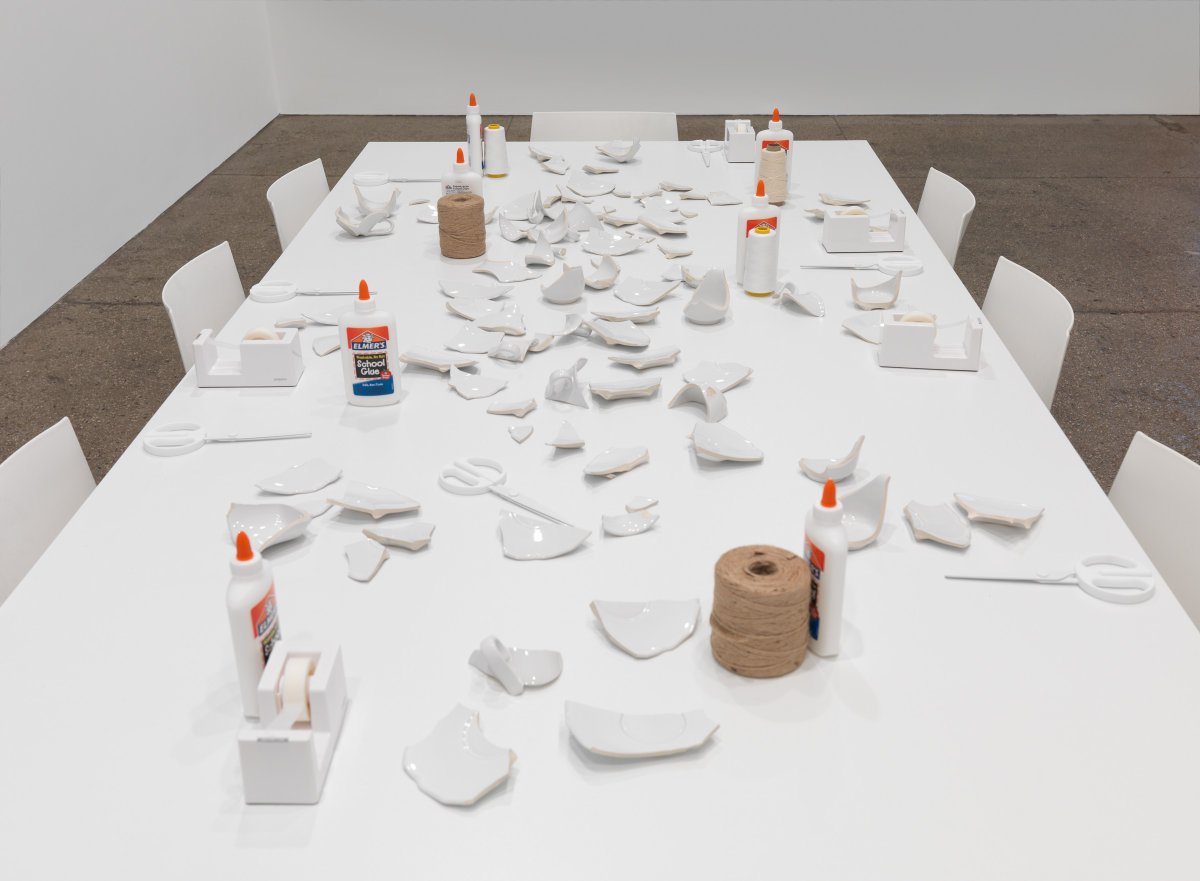 Ono played a pioneering role in the international development of conceptualism, performance art and experimental film. Ideas, more than materials, are the main component of her oeuvre. Many of these ideas are poetic, absurd and utopian, while others are specific and practical. Some are transformed into objects, while others remain immaterial.
Ono played a pioneering role in the international development of conceptualism, performance art and experimental film. Ideas, more than materials, are the main component of her oeuvre. Many of these ideas are poetic, absurd and utopian, while others are specific and practical. Some are transformed into objects, while others remain immaterial.
By Efi Michalarou
Photo: Whitechapel Gallery Archive
Since the early ‘60s, audience participation has been a crucial aspect of Yoko Ono’s work. The visitors of the exhibition “Yoko Ono: MEND PIECE for London” are invited to respond to this instruction from the artist, they will take a seat at a table on which are placed broken fragments of ceramic cups and saucers and some simple materials for repair – scissors, glue, twine and tape. When you they finish ‘mending’, they can display the results of their efforts along the shelves on the walls. Ono first presented this work as “Mending Piece I” at her 1966 solo exhibition at Indica Gallery, London, a renowned centre for countercultural art. Titled “Yoko at Indica: Unfinished Paintings and Objects”, almost every work in the exhibition was designed to be completed through the actions of visitors. The work immerses the visitor in a dream-like state. Viewers enter into an all-white space and are welcomed to take a seat at the table to reassemble fragments of ceramic coffee cups and saucers using the provided twine, tape, and glue. Akin to the Japanese philosophy of Wabi-sabi, an embracing of the flawed or imperfect, “Mend Piece” encourages the participant to transform broken fragments into an object that prevails its own violent rupture. The mended pieces are then displayed on shelves installed around the room. The contemplative act of mending is intended to promote reparation starting within one’s self and community, and bridge the gap created by violence, hatred, and war. In the words of Yoko Ono herself, “Mend with wisdom, mend with love. It will mend the earth at the same time”. In “Mend Piece”, we are asked to question our limitations as spectators within the art gallery context, as explored in Ono’s early conceptual work—what can be touched, who is the artist, what is the artwork—while beginning to engage with larger concepts of socio-economic and community equity. Experienced while seated at the table with friends and strangers, Ono’s piece directly encourages community engagement, it’s difficult to ignore the fact that we are so disparately divided on the question of what community is and means. Like in much of Ono’s oeuvre, the work takes on much more complicated and multi-faceted understandings when it enters into a real-life gallery space, where local and even personal politics play a large role in how it engages participants. Ono can control the color of the scissors, the chairs, and the string, but the context of “Mend Piece” is not tethered to instruction. Seated at the table, we are compelled to ask: who is not at this table? Who is not able to begin to heal?
Photo: Yoko Ono, Mend Piece, 1966-2021, Broken cups and saucers, thread, glue, tape, © Yoko Ono, Courtesy the artist and Whitechapel Gallery
Info: Whitechapel Gallery, 77-82 Whitechapel High St, London, United Kingdom, Duration: 25/8/2021-2/1/2022, Days & Hours: Tue-Sun 11:00-18:00, www.whitechapelgallery.org
